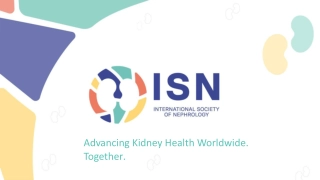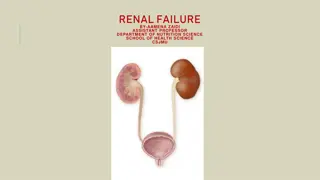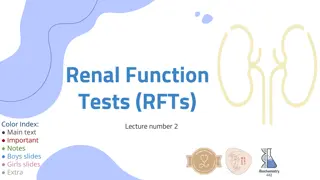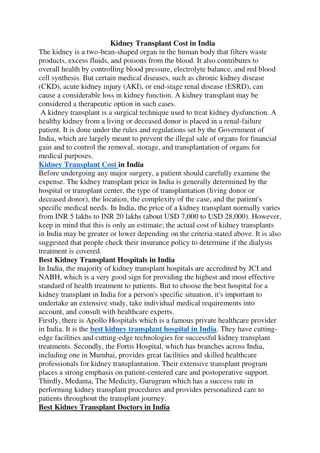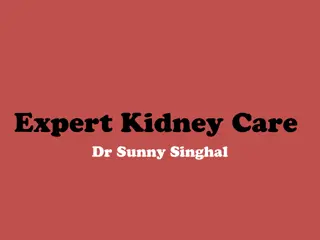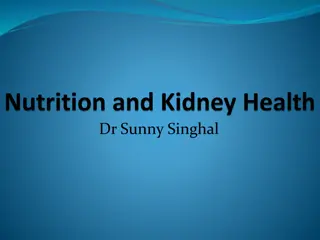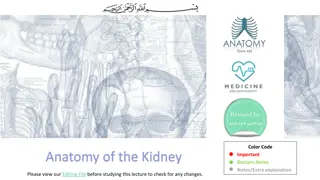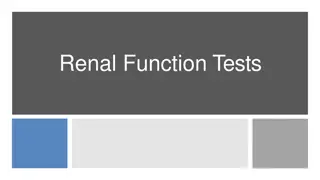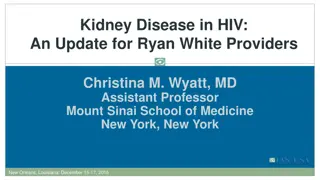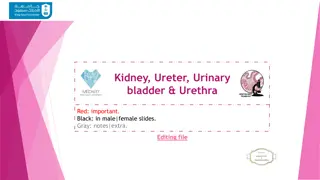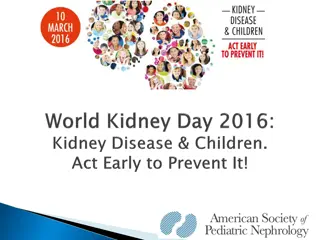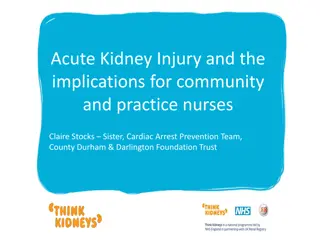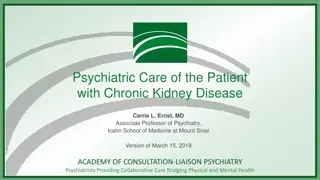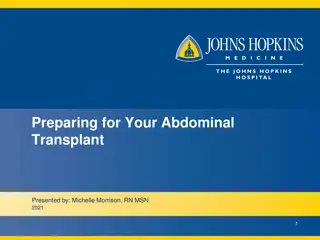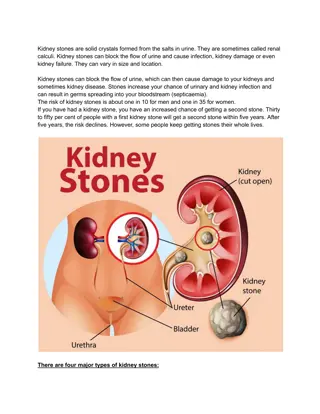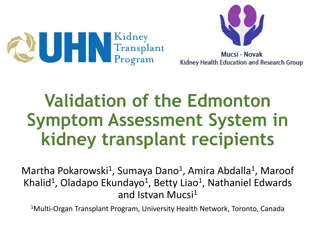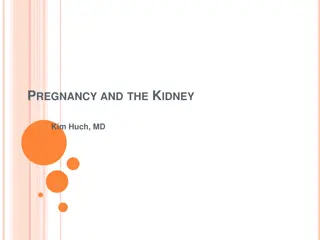Combatting Kidney Disease in Children: Importance of Early Detection and Education
Kidney disease affects millions worldwide, including children at risk from an early age. Encouraging education, early detection, and a healthy lifestyle is crucial to combat preventable kidney diseases. Various disorders like Vesicoureteral Reflux (VUR) and UTIs pose significant challenges, emphasizing the need for awareness and proactive management strategies. Addressing these issues can help prevent renal scarring, recurrent UTIs, and long-term complications in children. Collaborative efforts are vital in tailoring optimal evaluative and therapeutic approaches for individual patients and families.
Download Presentation

Please find below an Image/Link to download the presentation.
The content on the website is provided AS IS for your information and personal use only. It may not be sold, licensed, or shared on other websites without obtaining consent from the author.If you encounter any issues during the download, it is possible that the publisher has removed the file from their server.
You are allowed to download the files provided on this website for personal or commercial use, subject to the condition that they are used lawfully. All files are the property of their respective owners.
The content on the website is provided AS IS for your information and personal use only. It may not be sold, licensed, or shared on other websites without obtaining consent from the author.
E N D
Presentation Transcript
Kidney disease affects millions of people worldwide, including many children who may be at risk at an early age. It is therefore crucial that we encourage and facilitate education, early detection and a healthy life style in children, to fight the increase of preventable kidney diseases and to treat children with inborn and acquired disorders of the kidneys worldwide.
David Hains, MD LeBonheur Children s Hospital, University of Tennessee Health Science Center
Vesicoureteral (VUR): Abnormal backflow of urine Prevalence is at least 1-2% Vesicoureteral reflux reflux Craig JC, et al. J Am Soc Nephrol 19: 847 862, 2008
8% girls/2% boys have UTI in first 6 yrs of life. >1.4 million annual physician office visits ($8 Billion). ~50,000 children hospitalized annually with UTI diagnosis. Estimated annual economic burden of inpatient treatment: ~$180 million Montini et al. NEJM 2011; 365(3) AAP Clinical Practice Guideline. Pediatrics 2011; 128(3) Freedman et al. J. Urology 2005; 173(3) Spencer et al. Ped Neph 2010; 25(12)
UTIs Scarring CKD/ ESRD Hypertension http://www.medscape.org/viewarticle/432641
Goals: Prevent UTIs Limit side effects Prevent renal scarring Recurrence, 29% No recurrence, 71% Strategies: Antibiotic prophylaxis Conservative management Corrective procedures UTI 20% No UTI 80% Estrada CR, et al. Journal of Urology 181:229, 2009 Lee RS, et al. Pediatrics 118:586, 2006 Penido Silva JM, et al. Pediatr Nephrol 21:86, 2006
Hoberman et al. N Engl J Med. 2014 Sep11;371(11):1072-3. Slide from Russell Chesney
There are still unanswered questions regarding an optimal evaluative and therapeutic approach. An appropriate strategy must be tailored to the individual patient and family. Don t forget to ask about dysfunctional elimination syndrome and address it if needed!
Your pediatric nephrology community continues to work hard to improve clinical care, foster education, and advance the science regarding kidney disease in children! We appreciate your support and all you do for children s health care! Your pediatric nephrology community continues to work hard to improve clinical care, foster education, and advance the science regarding kidney disease in children! We appreciate your support and all you do for children s health care!



